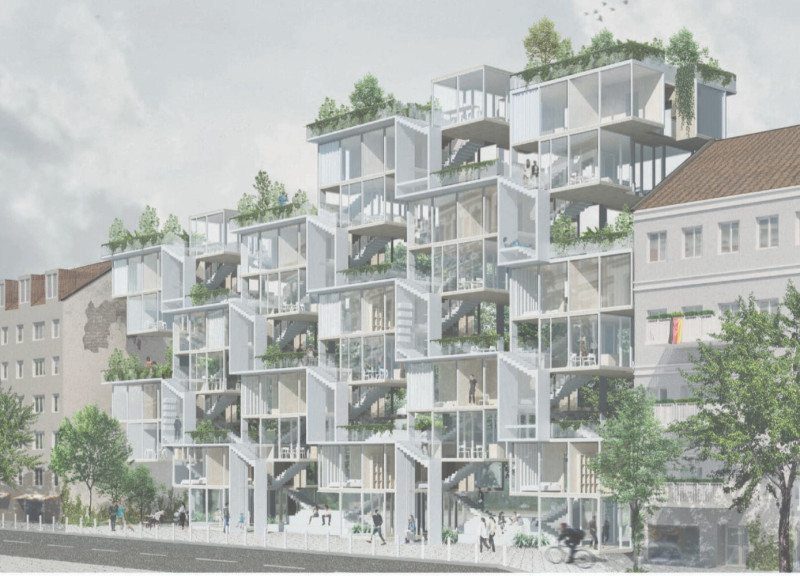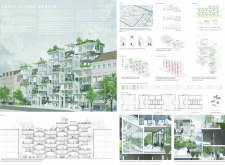5 key facts about this project
This project serves as a residential building that integrates private and communal areas to enhance connectivity within the community. It redefines the traditional notion of urban living, promoting a response to societal challenges such as housing shortages and the desire for communal living. The architectural design incorporates multi-level structures that feature interlocking forms, creating dynamic terraces and balconies that invite nature into everyday life. This thoughtful arrangement not only increases the aesthetic appeal of the building but also ensures ample natural light and cross-ventilation, contributing to a healthier indoor environment.
An essential aspect of the project is its spatial organization, which balances shared spaces with private units. The design encourages residents to interact in common areas while ensuring that individual privacy is maintained. This dual approach is fundamental to cultivating a sense of community and a supportive living environment. The thoughtful zoning of the building incorporates private units that are comfortable and functional, while common spaces are designed to facilitate gatherings, events, and activities that strengthen social bonds.
The materiality of "Grow-Living Berlin" reflects a commitment to sustainability and aesthetic harmony. Predominantly using reinforced concrete, glass, wood, and steel, the materials are selected not only for their structural integrity but also for their contribution to the building's thermal performance and design narrative. Reinforced concrete forms the backbone of the structure, providing stability, while extensive glass elements create transparency, allowing visual connections to the townscape and infiltrating spaces with natural light. Wood elements warm the ambiance of the interior, adding a human touch to contemporary design, while steel components ensure durability without increasing the overall footprint of the building.
Additionally, the integration of green roofs and vertical gardens elevates the project’s environmental credentials. These features not only enhance biodiversity by introducing flora into the urban setting but also serve practical functions such as improving air quality and regulating building temperature. This thoughtful approach toward greenery also contributes to the overall wellness of residents, promoting a lifestyle that values nature alongside human habitation.
A unique aspect of "Grow-Living Berlin" lies in its adaptability. The architectural design allows for flexible use of space, making it suitable for various family sizes and living arrangements. This forward-thinking strategy is vital in urban environments, where the needs and demographics of residents frequently change. The project anticipates future housing demands by allowing modifications that can keep pace with evolving lifestyles and community dynamics.
The innovative design strategies presented in "Grow-Living Berlin" underscore the potential of architecture to respond meaningfully to social and environmental challenges. By merging the concepts of private living with communal interaction, the project not only provides practical housing solutions but also enhances the quality of life for its residents. This thoughtful balance reflects contemporary architectural ideas that prioritize sustainability, community, and adaptability.
For those interested in delving deeper into this project, examining the architectural plans, sections, and detailed designs will reveal the intricacies of how these ideas manifest in the built environment. Exploring the comprehensive presentation of "Grow-Living Berlin" offers valuable insights into the innovative methodologies and design considerations that characterize this exemplary architectural endeavor.























